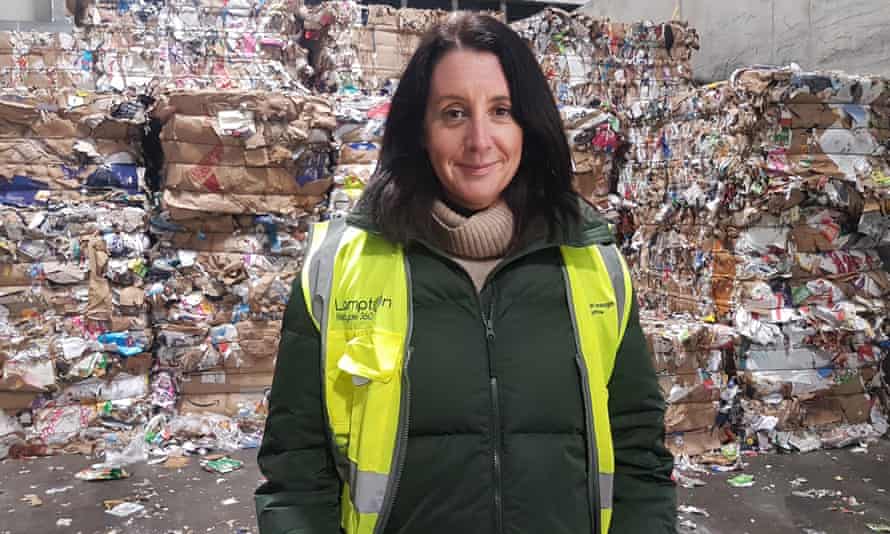When it comes to planet-friendly habits, recycling is by far the UK’s most popular, with 87% of householders claiming they do so regularly, according to the Waste and Resources Action Programme. But an investigation by Channel 4’s Dispatches into where our rubbish goes, and the role played by energy-from-waste incineration plants, has found that millions of tonnes of our carefully sorted empties are simply being burned after they’re collected.
Freedom of information requests reveal that, on average, 11% of rubbish collected for recycling is incinerated. In some areas the figures are far higher: 45% in Southend-on-Sea and 38% in Warwickshire.
The Dispatches team also found a direct correlation between regions tied into incineration contracts and low recycling rates. In England, more waste is now burned than recycled – 11.6 million tonnes was incinerated in 2019 while 10.9 million was sent for recycling. There are 48 energy-from-waste incinerators across the country, and industry figures show 18 more are planned.
Despite householders’ enthusiasm for recycling, rates in England remain in the doldrums – at 45%, according to government figures, the same level as in 2017, and a long way from the revolutionary shift in waste and recycling promised by the environment bill (postponed to the next parliamentary cycle).
Meanwhile the push for industrialised nations to become circular economies, using reuse, recycling and better design to tackle pollution, is beginning to guide policy elsewhere, notably the EU’s Green Deal.
In the past, objections to incineration largely centred on air quality and public health concerns, but the focus has shifted. In the age of net zero and ahead of COP26, today’s campaigners are looking at emissions and insisting that the green claims of the incineration industry are subject to scrutiny.
Other energy producers have to publish their total carbon dioxide emissions, yet the energy-from-waste industry must account only for the C02 from burning fossil-based waste such as plastic. It does not report emissions from food and garden waste, known as biogenic C02. The industry also says that by diverting waste from landfill (considered the worst possible outcome in waste orthodoxy) and claiming back a percentage of the embodied energy from the rubbish by generating electricity, energy-from-waste technology represents a low-carbon electricity source.
Dispatches‘ programme, Dirty Truth About Your Rubbish, which airs on Monday, looked at whether these claims stand up. The programme-makers were given access to a report by the consultancy Eunomia, commissioned by the environmental law charity ClientEarth. This analysis shows that producing electricity from waste is more carbon intensive than producing it from gas, and second only to coal. In fact, as coal is phased out, energy from waste will become the dirtiest form of electricity production in the UK. The report concludes that by 2035, incineration will be a more carbon-intensive process than even landfill.

While incineration might claim to be a transition technology, long-term PFI agreements mean that many local authorities will be locked in over the net-zero horizon for decarbonisation.
“If net zero is to be achieved nationally, it has to be achieved, on average, in every locality,” says Shlomo Dowen, spokesperson for the United Kingdom Without Incineration Network (UKWIN). “So if a locality is cursed with an incinerator, then that locality has to do without something else in order to pay for the carbon burden. Will local people be restricted in terms of how often they are able to use their cars or how often they go on holiday? The question becomes: what are local people prepared to do without to accommodate the emissions from an incinerator?”
The sign to the Edmonton EcoPark incinerator in north London remains clear: “Welcome to LondonEnergy. Powering the circular economy”, it reads. But increasingly, national and local governments could be looking for a less circuitous route to the circular economy.
Denmark, previously an energy-from-waste enthusiast, announced in June that it would review the country’s waste management infrastructure and reduce incineration capacity by 30%. On St David’s Day, the Welsh government declared a moratorium on new waste incinerators as part of its drive towards a circular economy.
But perhaps the most unexpected move came last month when the secretary of state for business, energy and industrial strategy, Kwasi Kwarteng, refused planning development consent for a large energy-from-waste incinerator in Kemsley, on the edge of Sittingbourne in Kent. One of the reasons cited was that the incinerator would cannibalise recycling.